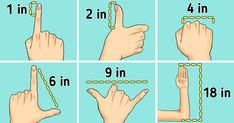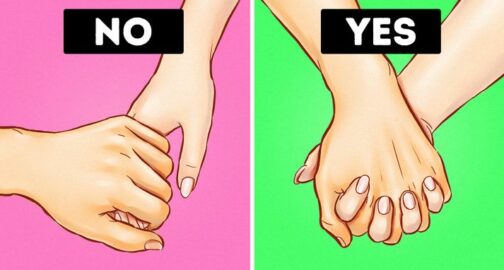
The Internet is full of different facts about Japan, so when it comes to their gadgets, architecture, and fashion, it’s hard to surprise us. We all know about Japan’s accuracy, work ethic, animal islands and square watermelons. But there are less obvious things happening there that can bewilder even the biggest fans of Japanese culture. For example, do you know what a “boredom room” is? Or that there’s a bookstore that sells only one book? The answers to these and other questions are right here in this article!
Bright Side has put together 14 unusual facts about Japan and Japanese culture that will change your view of the Land of the Rising Sun.
1. Japan’s “evaporating people”
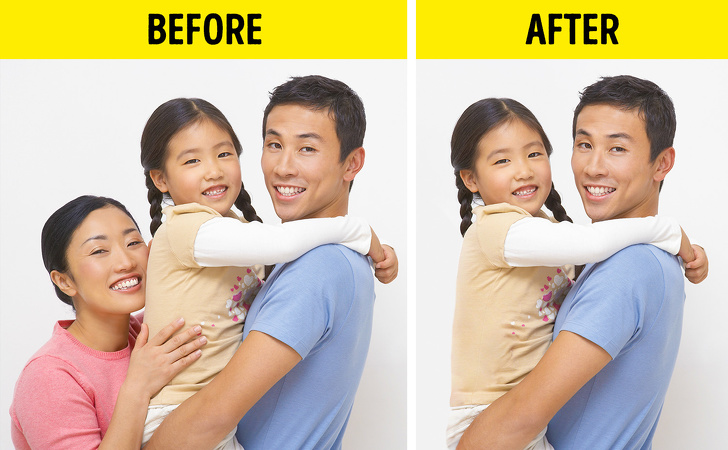
There is nothing worse for a Japanese person than losing social respect. A failed exam, a loss of a job, a divorce, and debt are just some of the failures that cause people to banish themselves and their families over their indignities. Some people commit suicide while others disappear for good.
Somewhere between 80,000 to 100,000 thousand people disappear in Japan annually. Usually, neither police nor families go looking for these lost people because they assume that they’ve committed suicide. Speaking of these “evaporating people” is considered taboo, so it’s something people don’t really talk about.
For those who decide to disappear, there are 2 ways to do so. The first is to move to the city of Sanya which isn’t located on any map. Technically, it doesn’t even exist. It’s a slum within Tokyo whose name has been erased by authorities. It’s very hard to live there because of bad conditions and hard labor. The second way is to stay at home, change your job and steer clear of friends and relatives forever.
2. Otaku is another way to escape.
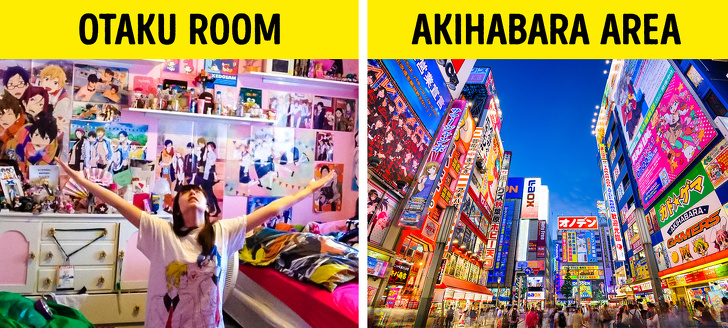
Another way of disappearing that is popular among young people in Japan is living as an otaku. An Otaku is a person who lives a double life as their favorite anime character.
Those who decide to become an otaku disappear from time to time into alternate realities where, in costume, they find themselves. They create this reality at home by using anime attributes, wearing costumes of their favorite characters and leading a reclusive life. Some other otakus prefer to spend time in the clubs of the Akihabara area where different goods are sold specifically for them.
3. Friends and family for rent
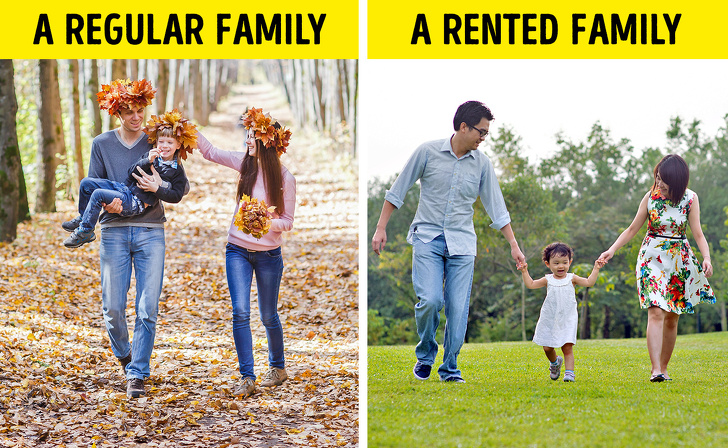
Money may not be able to buy love, but in Japan, it can certainly buy the appearance of love. You can hire a professional actor who becomes whatever a client asks them to be. You can even rent a baby for a couple of days — there are agencies that will eagerly rent them out. One of these agencies is called Family Romance which was established by Ishii Yuichi 8 years ago.
The main objective of the agency is to help people cope with loss or loneliness. But there are different kinds of requests, for example, to play a role of a wife’s lover or to apologize for a businessman who made a mistake. Once, the agency even had to perform an entire wedding with the participation of 50 actors. The client had to pay $18 million for that!
This job has its downsides though. The actors are often single and afraid to lose themselves in the roles they have to play. Very few people know who they really are and they can’t talk about their personal lives — that is why other people are attracted to their fake personalities.
4. Towns behind walls
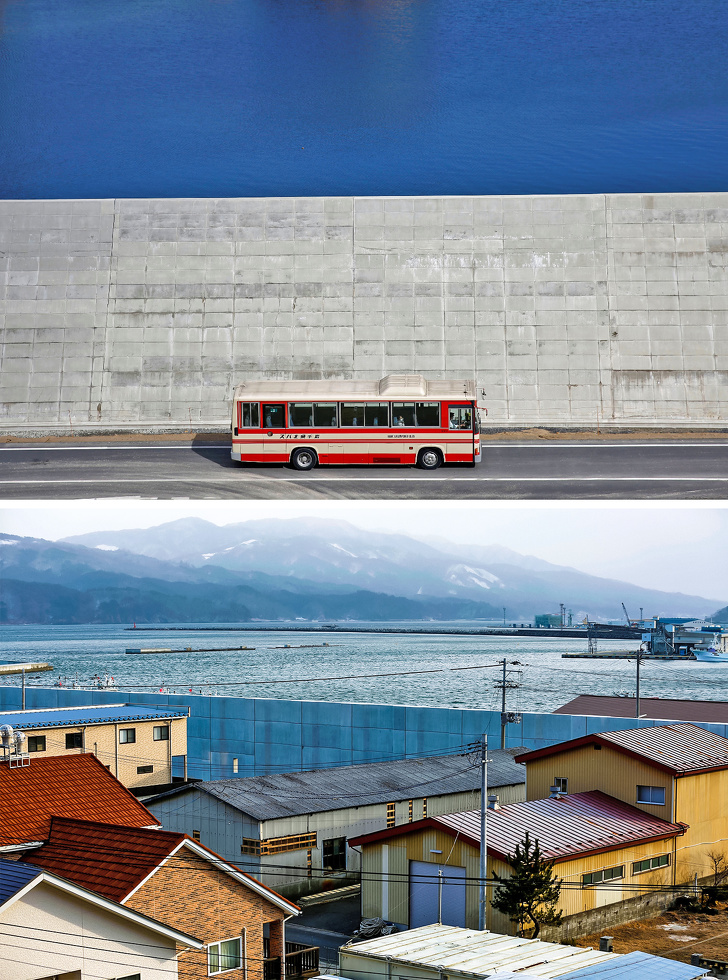
No, these aren’t stills from the movie, Pacific Rim where walls were built to protect people from monsters appearing from the bottom of the ocean. It is modern day Japan.
When a massive earthquake struck Eastern Japan in 2011 triggering a nuclear meltdown at the Fukushima power plant, the government decided to build sea walls to protect coastal towns. The walls are 41 feet high. But even if a tsunami was bigger than the wall, the wall would delay flooding and guarantee more time for evacuation.
In the beginning, local people supported the construction of the walls but their opinions changed later. Some people feel uncomfortable, the walls are too high and block the sea view — some citizens say they feel like they’re in a prison. Some people, however, say that these walls are a guarantee that a disaster like that of 2011 will never happen again.
5. Apology agencies
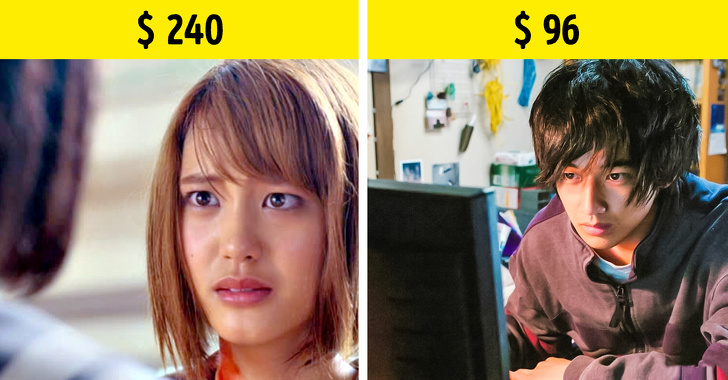
It’s not easy to apologize, and most people would like to avoid it entirely if possible. There are special agencies in Japan that will do it for you. Besides, “apology experts” in these agencies are good psychologists and can help you get out of very sticky situations.
Prices of such services can vary depending on the type of apology and the agency’s size. Personal apologies cost $240 on average, and telephone or email apologies cost around $96. Some agencies can charge hourly ($33 per hour on average).
Some agencies prefer not to show their price lists on their websites and provide consultations by phone. Apology options can be quite unusual, like those designed for sensitive or quick-tempered people, for example.
6. The “boredom rooms” for workers
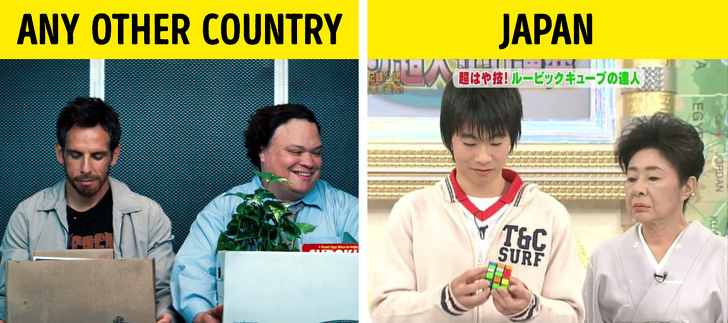
Employees whose positions have been removed are usually fired. The layoff rules in Japan, however, are very different from those we’re used to and usually, they are extremely disadvantageous for employers. For example, early retirement packages at Sony are equivalent to as much as 54 months of pay.
Not willing to pay such amounts, companies came up with the solution of “chasing-out rooms” where employees have to spend their working days doing literally nothing. They can read special literature or watch videos online. At the end of the day, they have to file a report on these activities.
Sony doesn’t think that these “boredom rooms” are a bad thing. Critics say that the real point of the rooms is to make employees feel forgotten and worthless — and eventually just make them quit.
7. Cuddles for a fee
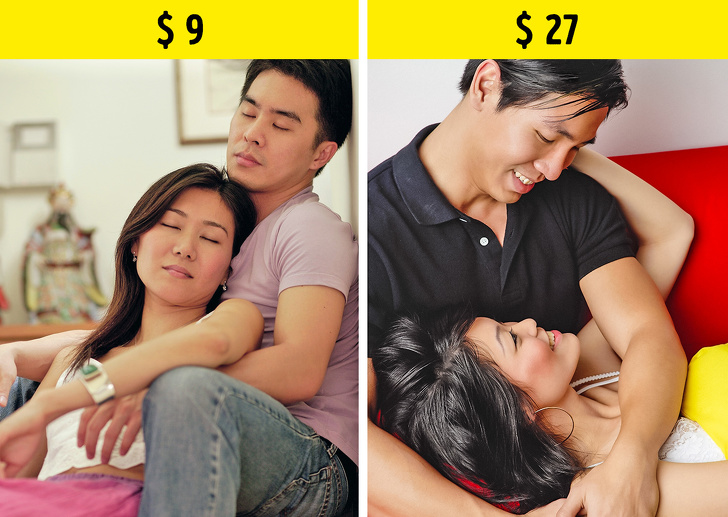
The problem of loneliness is very prevalent in Japan. That is why Japanese people like to visit venues where they can get rid of this feeling for at least a short period of time. For example, there is a place called Soineya (literally, “sleep together shop”) where one can sleep alongside a beautiful girl. No sex, just sleeping and cuddles.
Usually, customers have to pay an entrance fee (approximately $27) and all the other services are charged in accordance with the price list. For example, 20 minutes of co-sleeping is priced at $27, while an hour would be around $54. There are also optional services that are charged separately. For example, services can include sleeping in girl’s arms, petting a girl on the head, staring at each other, sleeping on a girl’s lap, and so on — every act has its own price.
8. Night hostess clubs
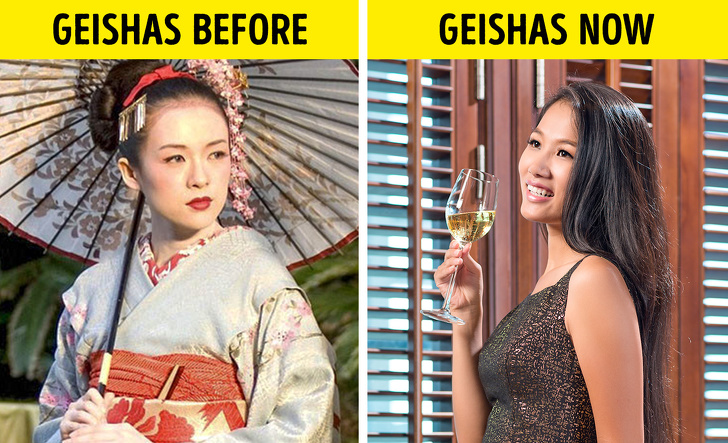
One more way for Japanese men to cope with loneliness is by going to a “kyabakura” club where a man can talk and drink with pretty women for money, of course. Cheaper kyabakuras will be around $27 for 40-60 minutes, while more expensive ones cost $45 — $137 for 45-90 minutes.
The girls who work in a kyabakura are often called geishas, kyaba-jo, or hostesses. Their job is to entertain customers with drinks and conversation. In traditional kyabakura, girls don’t provide sexual services. In fact, customers can be kicked out of the club if they try to simply hug a girl.
These clubs are very popular among businessmen, and a visit to a kyabakura can be a bonus given to successful employees. But, of course, the main customers going to a kyabakura consist of lonely men who don’t get enough warmth and attention from their families.
9. Cafés with places for lonely customers
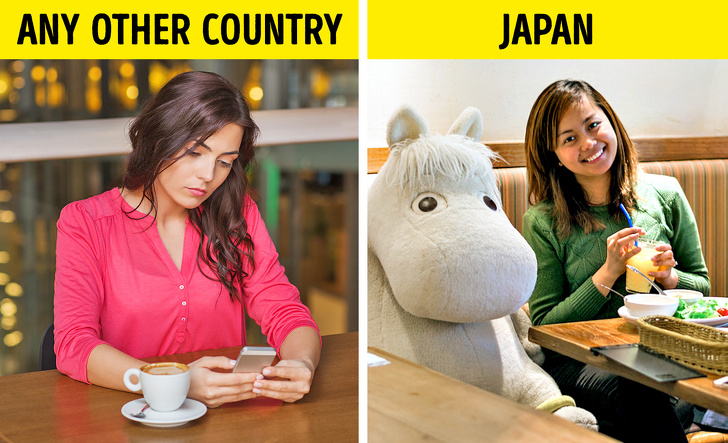
Moomin Bakery & Café is a cozy place in Tokyo which has earned the nickname, “anti-loneliness”. For those customers who come alone, personnel puts a giant stuffed Moomin on the next chair to them to have a meal or coffee with.
The idea became incredibly popular among the Japanese as well as numerous tourists who all wait in long lines at the entrance to Moomin Bakery & Café to take their seat. Those who don’t want to wait can always buy something in the café’s bakery.
10. Compact housing projects
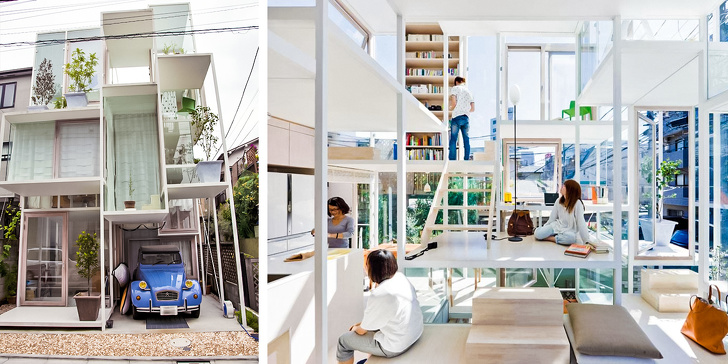
Compact houses or kyosho jutaku became very popular in Japan in the 1990s when accommodation prices started growing rapidly. Unlike a housing complex, they don’t take a lot of space and fit on tiny patches of land which are useless for anything else.
Sometimes, those patches are no bigger than a parking space. Architects can even use asymmetric pieces of land because they are cheaper and therefore, in great demand.
When looking at such tiny patches of land it’s impossible to imagine that anything could possibly fit there. However, architects and designers have proven that such compact houses are much more comfortable to live in than apartments in regular complexes.
11. A sampler club
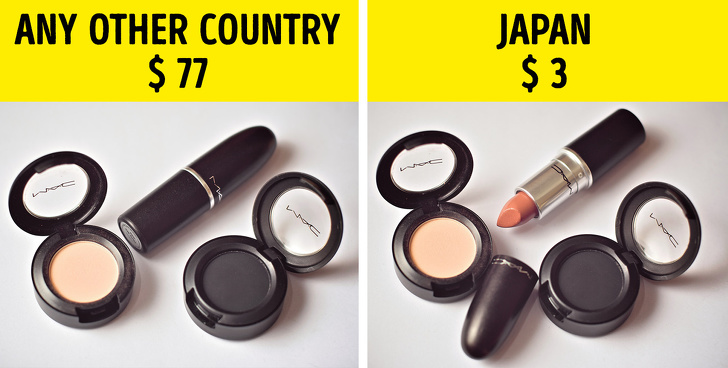
Sample Lab is a shop in Japan where you can be the first to try and test samples of different products from sauces and alcohol to beauty products and many other things.
To become a member, you need to be older than 16 years old, know Japanese and pay an annual membership fee of approximately $9. Every time you visit a shop you have to pay a bit less than $3. It was made to exclude “free stuff hunters” and to make sure that the members were actually interested in the specific product.
To get more free products, consumers have to fill out thorough questionnaires and get points.
12. Vending machines for everything
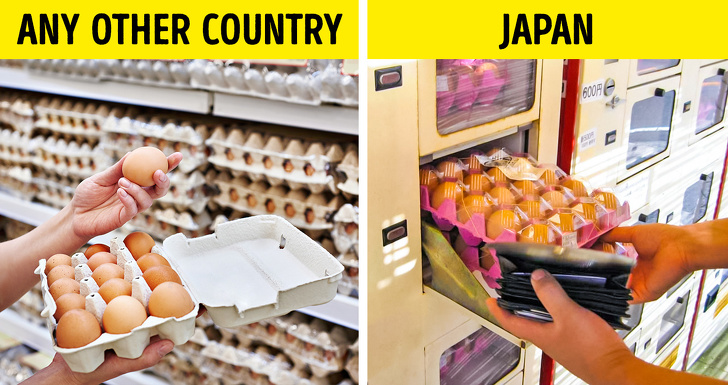
Vending machines are very popular in Japan. With no sales assistants, small rental prices, low crime levels and large cash flow, these vending machines are very popular. Besides, there are no lines to use them, they work 24/7 and can be found almost everywhere. It’s not surprising that you can buy everything there. Well, almost everything.
These machines can sell just about anything including eggs, toys, souvenirs, shoes, ties, and umbrellas. You can even buy underwear in them, including soiled female underwear. So, “almost everything” seems to be quite literal here.
13. A single book bookstore
Yoshiyuki Morioka, the owner of a small (the size of a small room) bookstore Morioka Shoten, chooses only one book and its copies to be sold in his store for a week.
Morioka Shoten’s visitors say that this store arranges exhibitions of only one single book. The store’s design changes in accordance with the chosen book. For example, when a book is about flowers, the owner decorates his store with flowers that are described in the book. That is why when you enter this bookstore it feels like you’re entering the book itself!
14. Hugging chairs
One more option for lonely people who want cuddle but are too shy to hug or cuddle with a stranger is the hugging chair. It has a shape of a giant doll with very long arms which can be wrapped around the person sitting on it.
This chair is a product of the UniCare company and can be bought at an average price of $419. It is for those who miss a human’s warmth, and the company’s employees say that you can even talk to it. One of the chair’s functions is to play old Japanese music which is adored by elderly people. It’s clear that this chair was designed with the comfort of people in mind.
Which fact about Japan seemed the most outlandish to you? Maybe you know some other unusual facts about the country? Share them in the comments below.
Preview photo credit Depositphotos.com, Uzla-san / flickr.com




